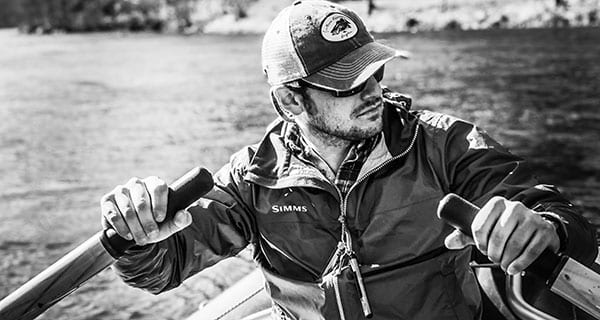“…So, I go to the mountain and stare at the dying trees that now cover nearly its entire summit and below, and I understand that even setting aside a wild land, a mountain, or a river, any piece of remnant wildness does not guarantee its survival. Against winds heavy with ozone and toxic metals and acid rains, laws that call for protection cannot begin to ensure preservation or survival.”
On the Spine of Time, Harry Middleton in reference to Mount Mitchell.
Talking about conservation is oftentimes one of the most challenging aspects of my job. It’s incredibly important, and I would argue a necessary qualification for any guide to be able to break down in simplistic terms, why our mountains and streams are so important to protect to the average person. It still amazes me how little everyday anglers are educated on the basics of aquatic ecology, and I’m afraid it’s led to the dumbing down of our responses to any threat facing the streams we fish on here in the mountains.
We’re often taught, especially in the fly fishing scene, how important “public lands” are and why we need to protect them. However, the exact processes for that seem to become an afterthought, but at least it makes a great idea for a quirky bumper sticker. Laws and regulations protecting public lands only go so far. I’ve unfortunately had plenty of experience witnessing how some of the places I fish and guide on have fallen victim to a whole host of abuses. Anything ranging from massive rock dams being made adjacent to signs saying “don’t move the rocks” to someone physically washing their dishes at a campsite with bleach and dumping it all into a trout stream.
It’s easy to blame government agencies for the lack of enforcement, but can we fairly expect a handful of wardens/law enforcement officers to cover thousands of acres of land? Let alone the ever-increasing amount of traffic these places get. Besides, in most places trying to call a game warden to report any wildlife violation is impossible due to the lack of phone reception.
Addressing this problem is a tricky dilemma. I think the first step is opening up a dialogue in the outdoor community about ways to counteract some of these scenarios that are starting to have dire ecological impacts, especially on some of our trout streams. Do people dump bleach or litter with ill intent? Does someone always have malicious thoughts when building rock dams or killing plants and animals unnecessarily? Honestly, in my opinion I don’t believe so. It’s all down to human ignorance. Does that excuse some people’s behavior? Absolutely not.
I have written in the past on personal responsibility, and how I think that ultimately, the protection of any stream or river, regardless of whether it’s on public land or not, falls on us as anglers doing the majority of the work. Something that I think the fishing community, as a whole, has fallen short on is educating anglers on conservation. I encourage those of you who are reading to really dig into the idea of a stream or a river you fish being your own. Conservation isn’t just about catchy tag lines for Instagram or picking up random bits of trash, it’s understanding why it’s all-important to the future of our fisheries. If you don’t understand it for yourself, then there’s no way you can pass on that knowledge to others. It’s not realistic to expect some government agency or conservation group to handle protecting all of these places on their own. Laws on a piece of paper or a sign on a tree ultimately do very little. It falls on our shoulders to protect our mountains and streams, and preserve not just public lands, but every natural area that we can for future generations of outdoor adventurers.
Ethan Hollifield is a member of a conservation organization called 2% For Conservation and a guide for Southern Appalachian Anglers
